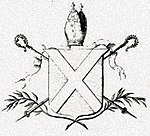James Stewart, Duke of Ross
Last updatedJames Stewart | |
|---|---|
| Archbishop of St Andrews | |
| Church | Roman Catholic Church |
| Archdiocese | St Andrews |
| Appointed | 20 September 1497 |
| Term ended | January 1504 |
| Predecessor | William Scheves |
| Successor | Alexander Stewart |
| Other post(s) | Commendator of Dunfermline (1500–1504) |
| Personal details | |
| Born | March 1476 |
| Died | January 1504 (aged 28) |
| Parents | James III of Scotland Margaret of Denmark |
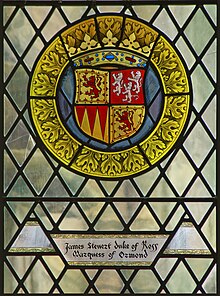
James Stewart, Duke of Ross (March 1476 – January 1504) was a Scottish prince, and the second son of King James III of Scotland [1] and his wife, Margaret of Denmark. [2] James was heir presumptive to his brother until his death, and was Archbishop of St Andrews and Lord Chancellor of Scotland.
Contents
Life
He was made Marquess of Ormond at his baptism. He was created Earl of Ross [3] in 1481 after that title was forfeited to the crown by John, Lord of the Isles.
Of his father's three sons, James of Ross was the favourite. James III tried to marry him to Edward IV's daughter, Catherine of York. This increasing preference shown to James of Ross was a factor in the rebellion of his elder brother (the future James IV) against their father; and later, as king, James IV was suspicious of his brother's loyalty.
Nonetheless, when the elder James succeeded to the crown in 1488, he raised James of Ross's title to Duke of Ross. [3]
Around May 1497, his brother the King nominated James of Ross (then 21 years old) to be Archbishop of St Andrews. [1] King James thought that would keep James of Ross from rebelling against him. At that time, James of Ross was a minor, and so the revenues of the archbishopric would be controlled by King James. [4]
James of Ross also became Lord Chancellor of Scotland in 1502. [5]
Name
He was one of three brothers, his two brothers being King James IV of Scotland and John Stewart, Earl of Mar. It may seem surprising that there were two brothers both called James, but in late medieval Scotland it was not uncommon to have two brothers, or occasionally even three, with the same Christian name. [6]
Arms
The arms of James of Ross were: Quarterly 1st and 4th: Royal Arms of Scotland, 2nd: Gules, three lions rampant argent (Ross) 3rd: Or, three piles gules (Brechin). [7]
Related Research Articles

James V was King of Scotland from 9 September 1513 until his death in 1542. He was crowned on 21 September 1513 at the age of seventeen months. James was the son of King James IV and Margaret Tudor, daughter of Henry VII of England. During his childhood Scotland was governed by regents, firstly by his mother until she remarried, and then by his second cousin, John Stewart, Duke of Albany. James's personal rule began in 1528 when he finally escaped the custody of his stepfather, Archibald Douglas, 6th Earl of Angus. His first action was to exile Angus and confiscate the lands of the Douglases.

James IV was King of Scotland from 11 June 1488 until his death at the Battle of Flodden in 1513. He inherited the throne at the age of fifteen on the death of his father, James III, at the Battle of Sauchieburn, following a rebellion in which the younger James was the figurehead of the rebels. James IV is generally regarded as the most successful of the Stewart monarchs. He was responsible for a major expansion of the Scottish royal navy, which included the founding of two royal dockyards and the acquisition or construction of 38 ships, including the Michael, the largest warship of its time.
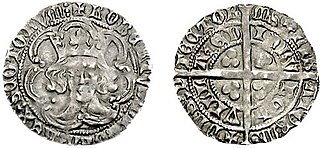
Robert III, born John Stewart, was King of Scots from 1390 to his death in 1406. He was also High Steward of Scotland from 1371 to 1390 and held the titles of Earl of Atholl (1367–1390) and Earl of Carrick (1368–1390) before ascending the throne at about the age of 53 years. He was the eldest son of King Robert II and Elizabeth Mure and was legitimized by the second marriage of his parents and by papal dispensation in 1349.

James III was King of Scots from 1460 until his death at the Battle of Sauchieburn in 1488. He inherited the throne as a child following the death of his father, King James II, at the siege of Roxburgh Castle. James III's reign began with a minority that lasted almost a decade, during which Scotland was governed by a series of regents and factions who struggled for possession of the young king, before his personal rule began in 1469.
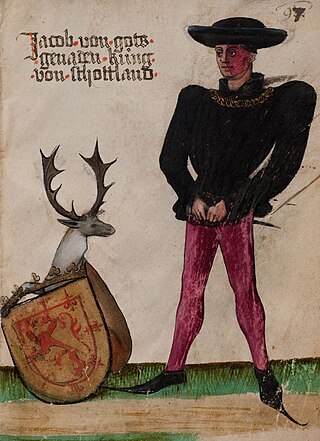
James II was King of Scots from 1437 until his death in 1460. The eldest surviving son of James I of Scotland, he succeeded to the Scottish throne at the age of six, following the assassination of his father. The first Scottish monarch not to be crowned at Scone, James II's coronation took place at Holyrood Abbey in March 1437. After a reign characterised by struggles to maintain control of his kingdom, he was killed by an exploding cannon at Roxburgh Castle in 1460.

Duke of Rothesay is the main dynastic title traditionally given to the male heir apparent to the Scottish and, later, British thrones. The dukedom was created in 1398 by Robert III of Scotland for his eldest son.

The House of Stuart, originally spelled Stewart, was a royal house of Scotland, England, Ireland and later Great Britain. The family name comes from the office of High Steward of Scotland, which had been held by the family progenitor Walter fitz Alan. The name Stewart and variations had become established as a family name by the time of his grandson Walter Stewart. The first monarch of the Stewart line was Robert II, whose male-line descendants were kings and queens in Scotland from 1371, and of England, Ireland and Great Britain from 1603, until 1714. Mary, Queen of Scots (r.1542-1567), was brought up in France where she adopted the French spelling of the name Stuart.
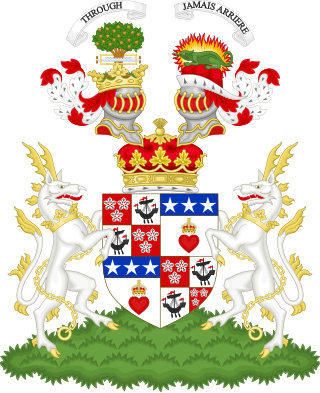
Duke of Hamilton is a title in the Peerage of Scotland, created in April 1643. It is the senior dukedom in that peerage, and as such its holder is the premier peer of Scotland, as well as being head of both the House of Hamilton and the House of Douglas. The title, the town of Hamilton in Lanarkshire, and many places around the world are named after members of the Hamilton family. The ducal family's surname, originally "Hamilton", is now "Douglas-Hamilton". Since 1711, the dukedom has been held together with the Dukedom of Brandon in the Peerage of Great Britain, and the dukes since that time have been styled Duke of Hamilton and Brandon, along with several other subsidiary titles.

Robert Stewart, Duke of Albany was a member of the Scottish royal family who served as regent to three Scottish monarchs. A ruthless politician, Albany was widely regarded as having murdered his nephew, the Duke of Rothesay, and brother to the future King James I of Scotland. James was held in captivity in England for eighteen years, during which time Albany served as regent in Scotland, king in all but name. He died in 1420 and was succeeded by his son, Murdoch Stewart, Duke of Albany, who was executed for treason when James returned to Scotland in 1425, almost causing the complete ruin of the Albany Stewarts.
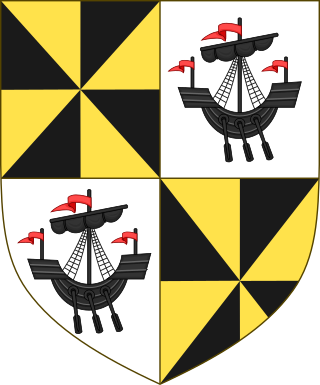
Colin Campbell, 1st Earl of Argyll was a medieval Scottish nobleman, peer, and politician. He was the son of Archibald Campbell, Master of Campbell and Elizabeth Somerville, daughter of John Somerville, 3rd Lord Somerville. He had the sobriquet Colin Mulle, Bold Earl Colin.
The Earl of Fife or Mormaer of Fife was the ruler of the province of Fife in medieval Scotland, which encompassed the modern counties of Fife and Kinross. Due to their royal ancestry, the earls of Fife were the highest ranking nobles in the realm, and had the right to crown the king of Scots.

The Earl or Mormaer of Lennox was the ruler of the region of the Lennox in western Scotland. It was first created in the 12th century for David of Scotland, Earl of Huntingdon and later held by the Stewart dynasty.
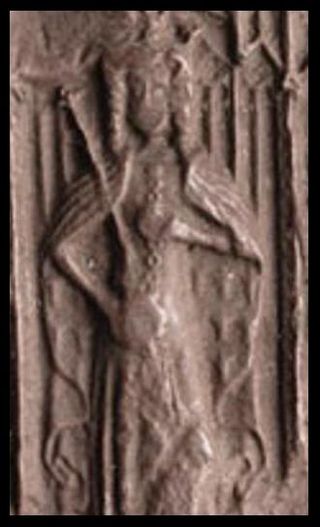
Murdoch Stewart, Duke of Albany was a leading Scottish nobleman, the son of Robert Stewart, Duke of Albany, and the grandson of King Robert II of Scotland, who founded the Stewart dynasty. In 1389, he became Justiciar North of the Forth. In 1402, he was captured at the Battle of Homildon Hill and would spend 12 years in captivity in England.
The Lord Chancellor of Scotland, formally the Lord High Chancellor, was a Great Officer of State in the Kingdom of Scotland.
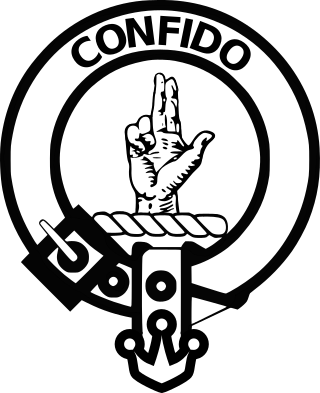
Clan Boyd is a Scottish clan of the Scottish Lowlands and is recognized as such by the Lord Lyon King of Arms.

Alexander Stewart was an illegitimate son of King James IV of Scotland by his mistress Marion Boyd. He was the King's eldest illegitimate child. He was an elder brother of Catherine Stewart, his only full sibling, and was an older half-brother of the future James V. He was installed as Archbishop of St Andrews at the age of eleven and was killed beside his father the King at the Battle of Flodden aged twenty.
Holders of the office of Lord Chamberlain of Scotland are known from about 1124. It was ranked by King Malcolm as the third great Officer of State, called Camerarius Domini Regis, and had a salary of £200 per annum allotted to him. He anciently collected the revenues of the Crown, at least before Scotland had a Treasurer, of which office there is no vestige until the restoration of King James I when he disbursed the money necessary for the maintenance of the King's Household.
William Douglas, 2nd Earl of Angus was a Scottish nobleman and soldier. The son of George Douglas, 1st Earl of Angus and Princess Mary of Scotland, he was a grandson of King Robert III.
George Gordon, 2nd Earl of Huntly was a Scottish nobleman and Chancellor of Scotland from 1498 to 1501.

Andrew Stewart was Lord Chancellor of Scotland from 1460 to 1482 and one of the leading servants of King James III of Scotland.
References
- 1 2 Oxford Reference website, 1st duke of Ross, James Stewart
- ↑ The Stewart Society website, History of the Stewarts, King James III of Scotland
- 1 2 Tudor Times website, Scottish Peers Chapter 2: Dukes & Marquises
- ↑ Norman Macdougall James IV (Edinburgh, 1989)
- ↑ The Stewart Society website, James Stewart, Duke of Ross
- ↑ Black The Surnames of Scotland
- ↑ Johnston, George Harvey (1906). The heraldry of the Stewarts, with notes on all the males of the family, descriptions of the arms, plates and pedigrees. Edinburgh W. & A.K. Johnston. p. 27. Retrieved 9 October 2017.
